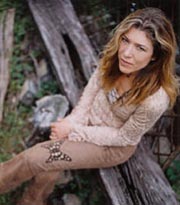The New York Times’s site has reposted a 2006 article about tennis star Roger Federer, not because of Federer’s resurgence at last month’s U.S. Open, but because the piece is by David Foster Wallace, the beloved and very funny writer who committed suicide last week after suffering depression most of his adult life.
You can read several megs of stuff about Wallace’s life and work by Googling his name: knock yourself out, as he’d say. What attracted my eye was the headline “Roger Federer as Religious Experience.”
Wallace often wrote about tennis (he was a junior champion in his home state of Illinois), not so much about religion, and whoever wrote the headline for the piece ramps up the religion angle more than the piece delivers. But at its most ethereal point, Wallace’s piece does make a point about what we can talk about and what we can’t. “There are three kinds of valid explanation for Federer’s ascendancy,” Wallace wrote. “One kind involves mystery and metaphysics and is, I think, closest to the real truth. The others are more technical and make for better journalism.”
This is a beautiful illustration of what made Wallace’s writing so interesting and funny but also sad. The truth, in his blithely scribbled formula, is contained in an untouchable realm that words can’t really pierce. But we go on talking anyway, discussing things in a way that wanders from reality, but has on its side precision and good form. It’s a deadly critique of our information-choked culture, offered, in Wallace’s typical style, with cheerful shrug.
It’s also a sharp sketch of what the church does in trying to approximate, in ritual, song and prayer, the mysteries and metaphysics of creation. For my money, then, the piece might as well be headlined, “Religious Experience as Roger Federer” as much as the other way around.


